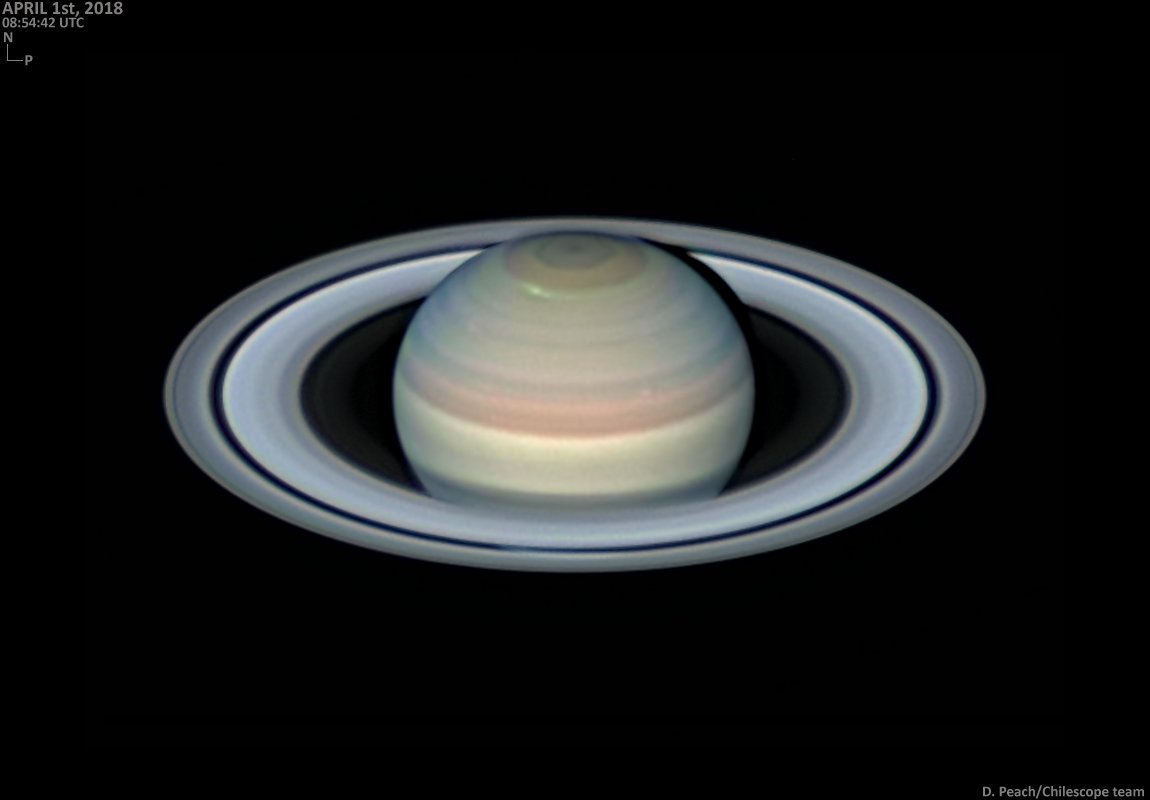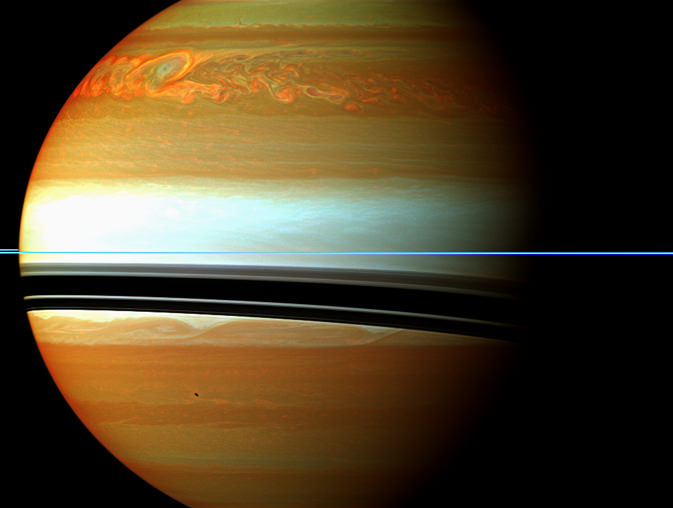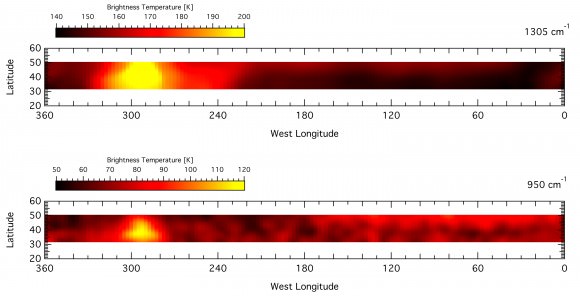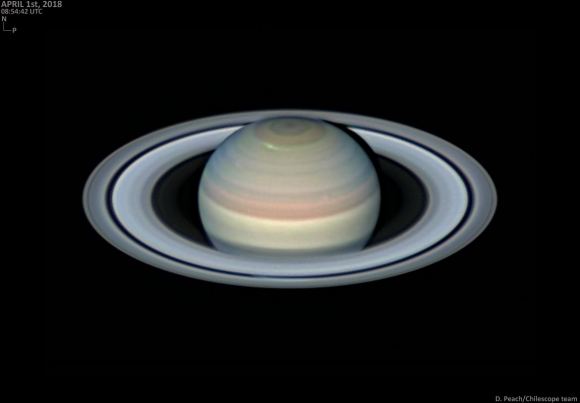
Are you following the planets this season? The planetary action is about to heat up, as Jupiter, Saturn and Mars all head towards fine oppositions over the next few months.
Spying the Storms of Saturn
Astrophotographer Damian Peach raised the alarm on Twitter this past week of a possible bright storm emerging of the planet Saturn. The spot was noticeable even with the naked eye and in the raw video Peach captured, a sure sign that the storm was a biggie.
Though outbursts of clusters of white spots on the surface of Saturn aren’t uncommon, it’s rare to see one emerge at such a high latitude. The storm had faded considerably the next observing session Peach performed on April 5th, though observers should remain vigilant.
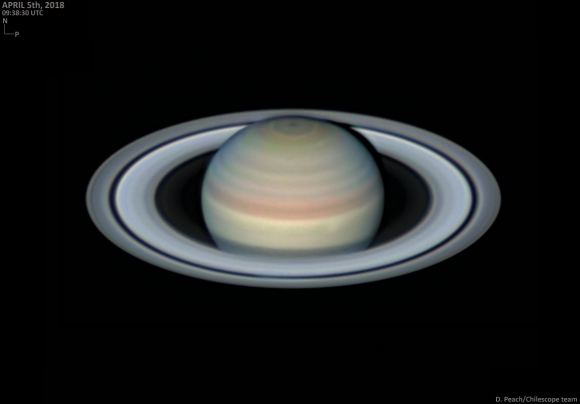
It’s sad to think: Cassini and our eyes in the outer solar system are no more… and the situation will probably remain this way for some years to come. Juno also wraps up its mission at Jupiter (pending extension) this year, and New Horizons visits its final destination Ultima Thule (neé 2014 MU69) on New Year’s Day 2019, though it’ll likely continue to chronicle its journey through the outer realms of the solar system, much like the Voyager 1, 2 and Pioneer 10, 11 missions, also bound to orbit the galaxy, mute testaments to human civilization. But even though proposals for Europa Clipper, a nuclear-powered quad-copter for Saturn’s moon Titan, and a Uranus and/or Neptune Orbiter are all on the drawing board, the “gap decade” of outer solar system exploration will indeed come to pass and soon.
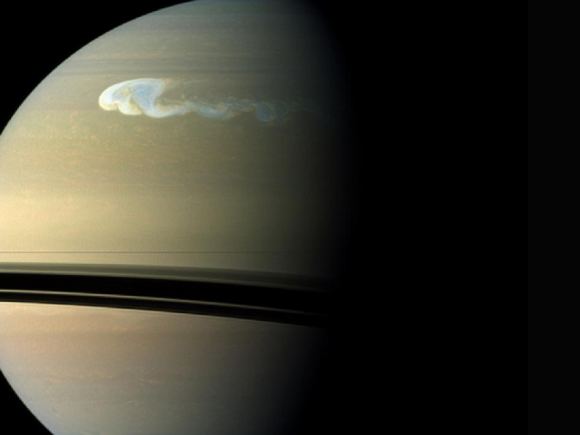
But dedicated amateur astronomers continue to monitor the outer solar system for changes. This month sees Saturn rising around 1:30 AM local and transiting highest to the south for northern hemisphere observers at 6:00 AM local, just before sunrise. Saturn crosses the constellation Sagittarius in 2018, bottoming out at its most southerly point this year for its 29 year path around the Sun. Saturn currently shines at +0.4 magnitude, extending 40” across (including rings) as it heads towards a fine opposition on June 27th. After opposition, Saturn formally crosses into the dusk sky. The amazing rings are an automatic draw, but last week’s storm admonishes us not to forget to check out the saffron-colored disk of Saturn itself as well. For example, I’ve always wondered: why didn’t we see the hexagon before? It’s right there festooning the northern hemisphere cap, plain as day in modern amateur images… to be sure, we’re in a modern renaissance of planetary astrophotography today, what with image stacking and processing, but surely eagle-eyed observers of yore could’ve easily picked this feature out.
And the view is changing as well, as Saturn’s rings reached a maximum tilt in respect to our line of sight of 27 degrees in 2017, and now head back towards edge-on again in 2025. And be sure to check out Saturn’s retinue of moons, half a dozen of which are easily visible in a telescope at even low power.
Finally, here’s another elemental mystery poised by Saturn related to the current storm, one that Cassini sought to solve in its final days: how fast does Saturn rotate, exactly? The usual rough guesstimate quoted is usually around 10.5 hours, but we’ve yet to pin down this fundamental value with any degree of precession.
One thing’s definitely for sure: we need to go back. In the meantime, we can enjoy the early morning views of the most glorious of the planets in our Solar System.

